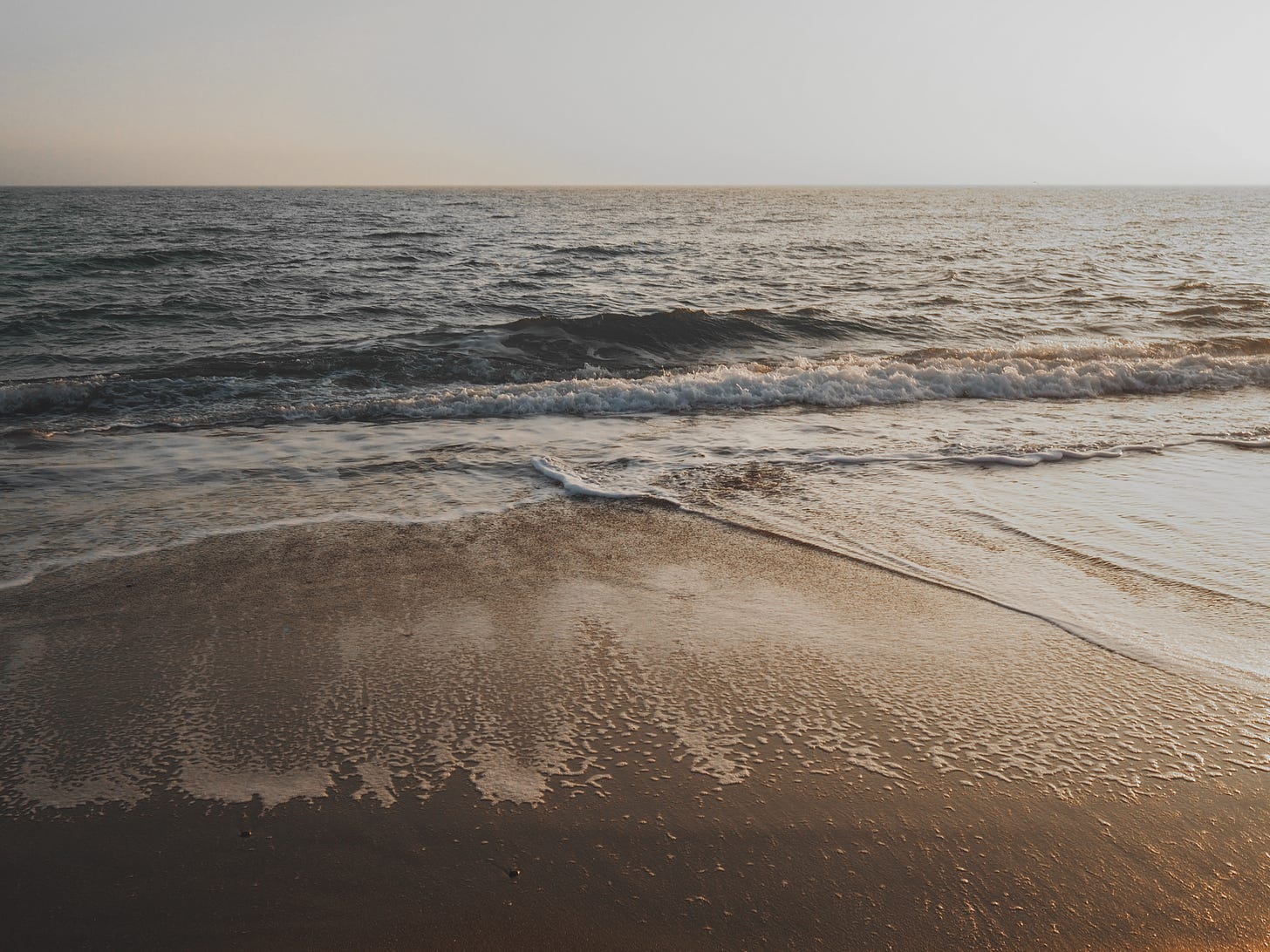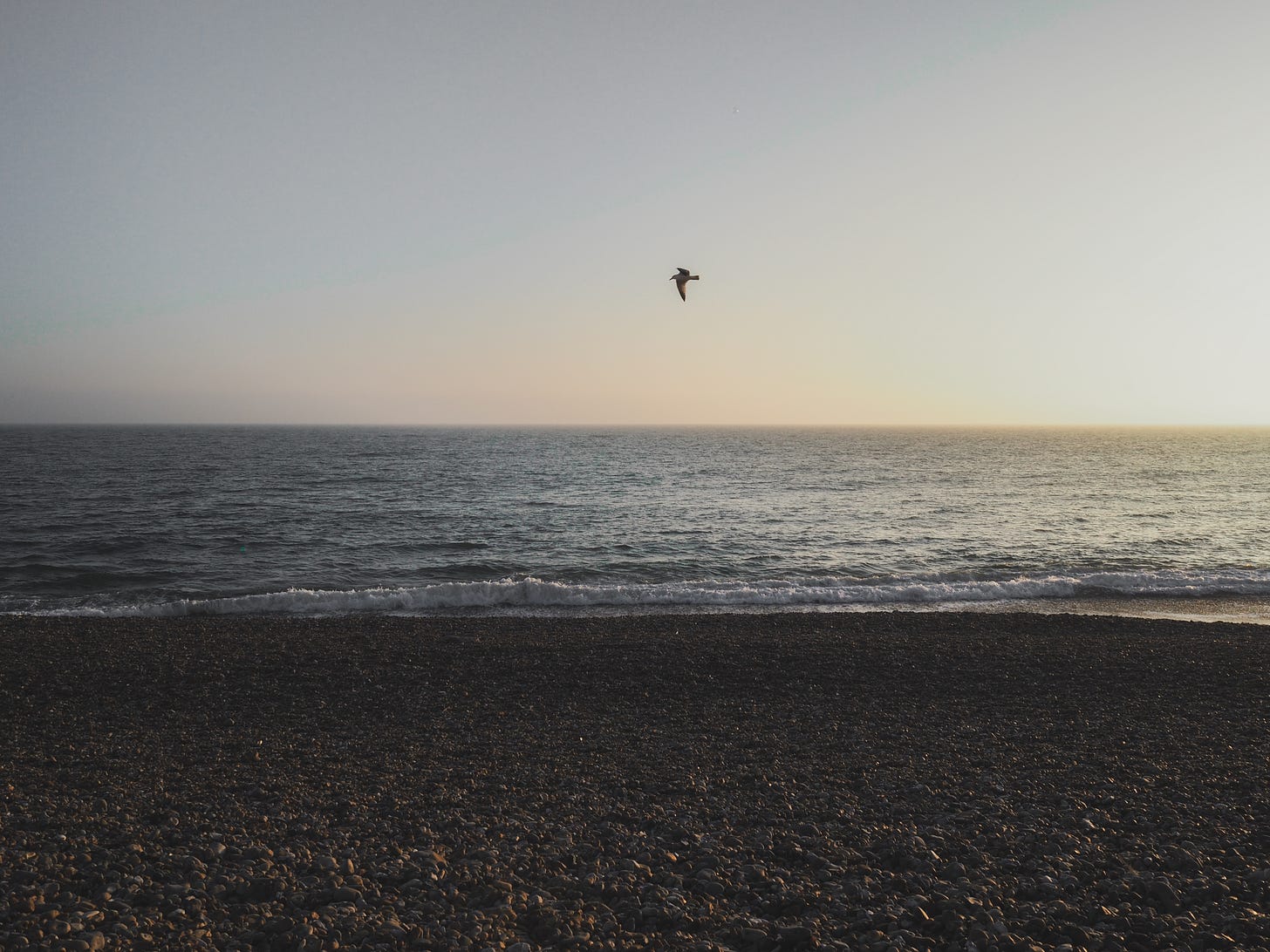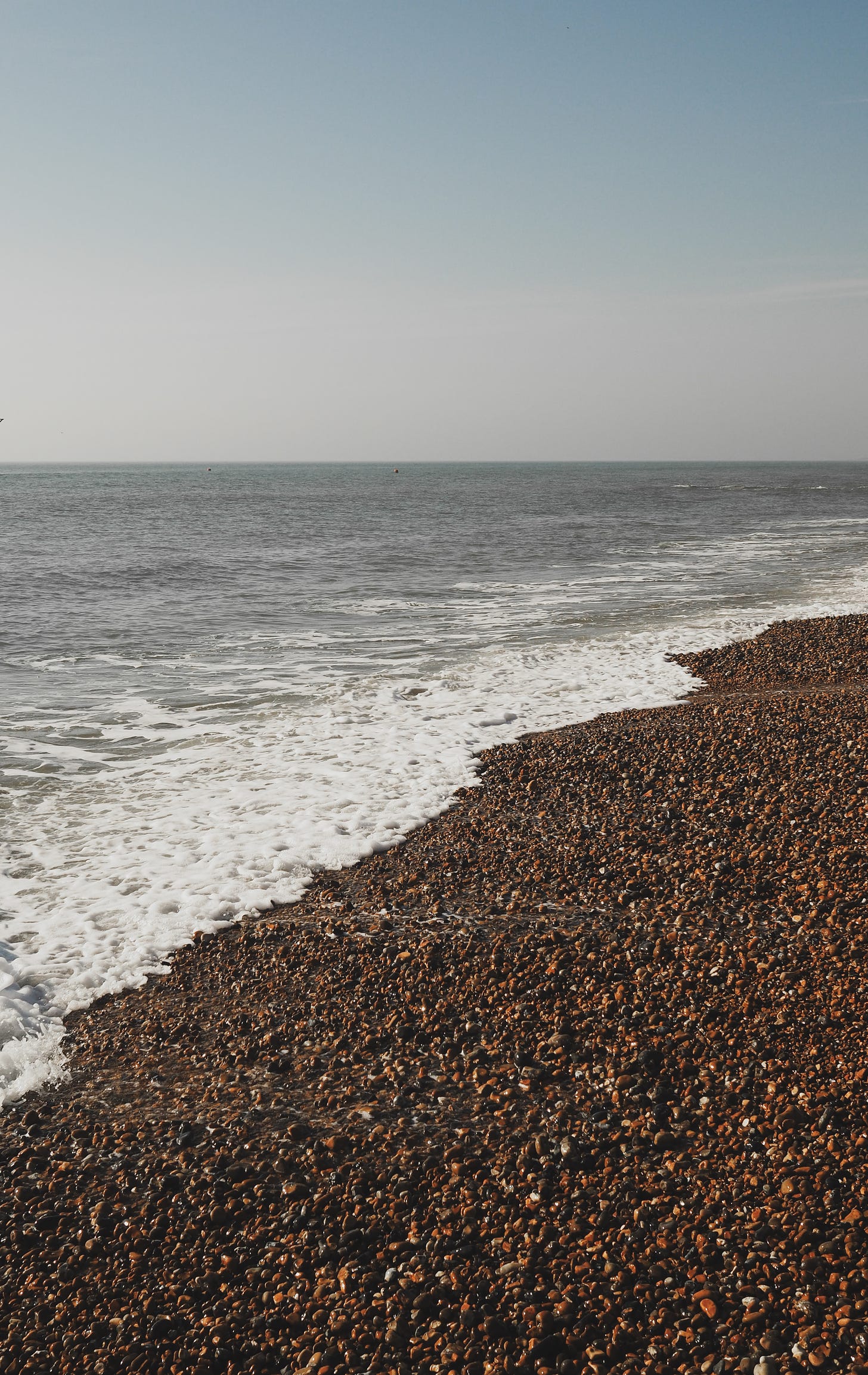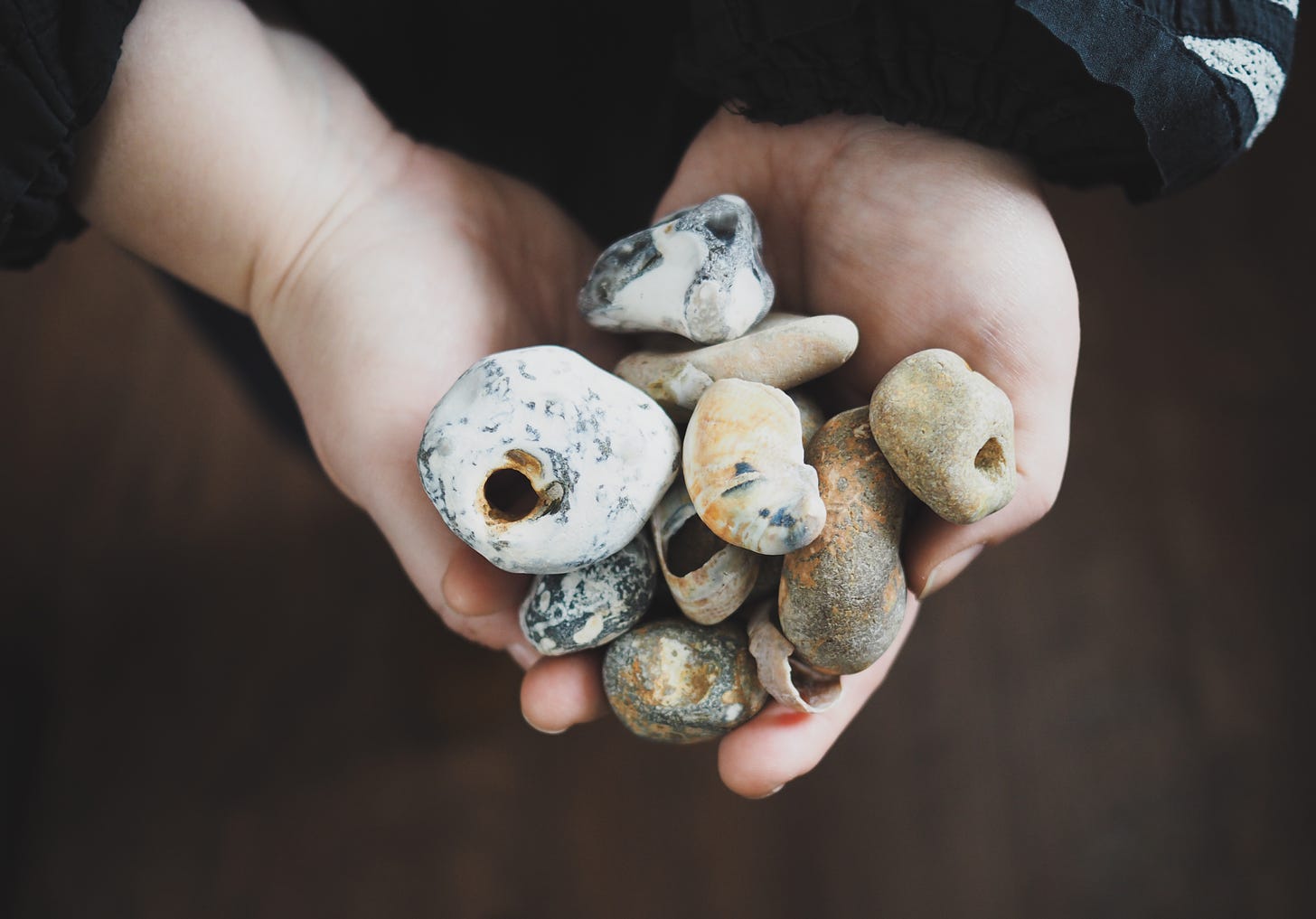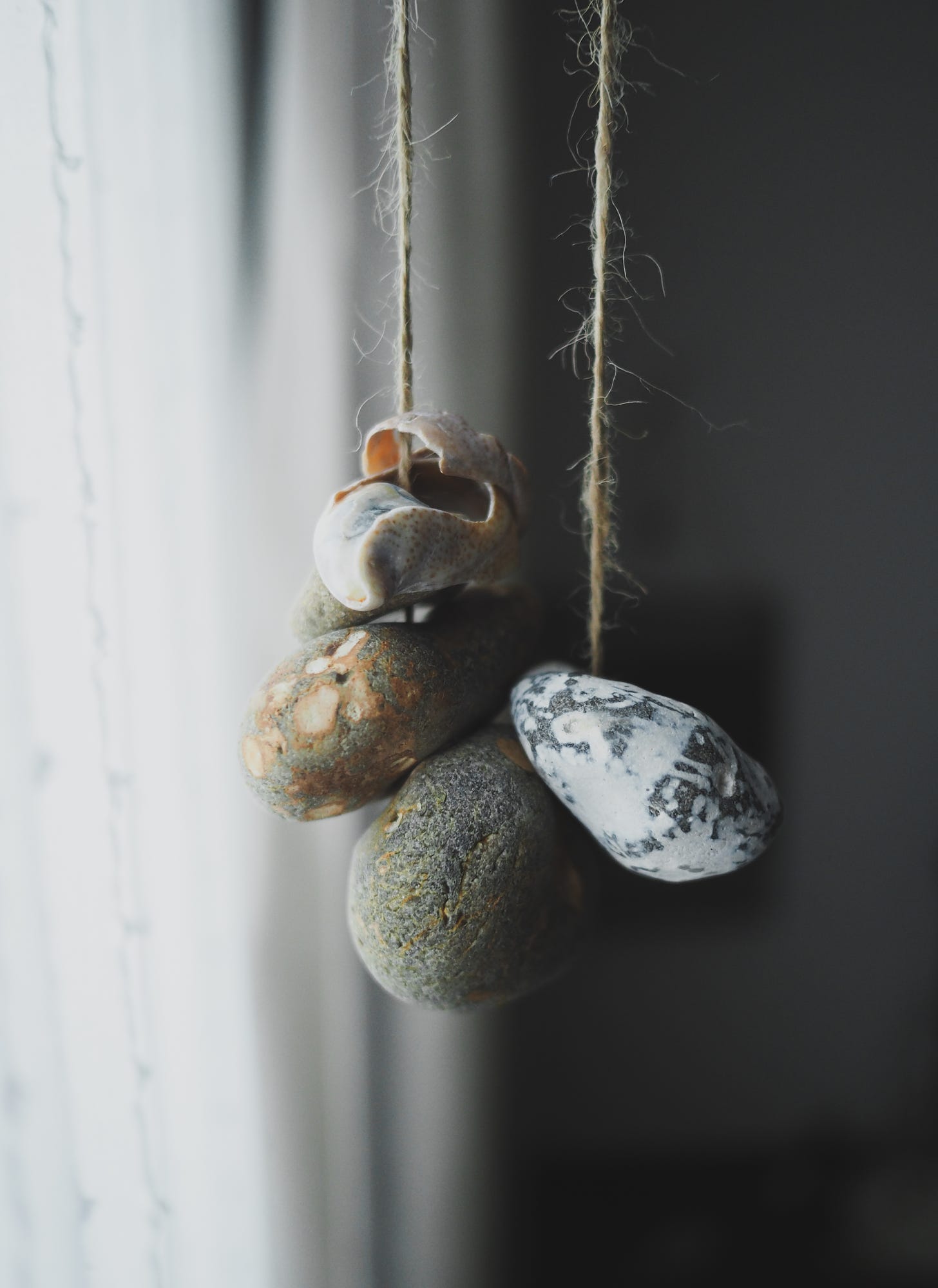We arrived at the beach just as the sun was in its last hour of the day, and turning all the blues a warm shade of dark gold. It had been a clear, bright day which made it easy to forget that it was still only mid-February; that was until the sharp chill in the wind sent an icy reminder through my insufficiently weather-proof blouse. On went the woollen layers and in went the hot, vinegary chips which we managed to finish without any seagull thievery.
The tide was on its way out and we could see a rare glimpse of sand rather than stones. I was looking forward to a bit of foraging for beach treasures, but the receding daylight ensured that activity would need to wait for the next day.
Thankfully the weather was still on our side for our second day by the sea. It was hazier but warmer which meant fewer scarves and less to get in the way of some close-up beachcombing. This time the tide was making its way in, but that didn’t deter me. I found it helpful to have the shallow waves rolling over a patch of pebbles and jumbling them up to reveal new treasures in the same place. My feet enjoyed it too: the feeling of the salt water trickling into my boots every time it surged up gave me a nice tingle.
There were so many beautiful pebbles it was difficult not to take home a large box of them, but knowing I had a long train journey later that day kept me nicely selective about what I chose to keep. What I was most excited about were the vast numbers of hag stones I found. A hag stone is a stone with a naturally occurring hole in it. It is thought that these holes have various causes: natural erosion and tunnelling from a powerful flow of water, a certain type of mollusc1, and smaller stones repeatedly grinding into a stone’s surface.
Whenever I visit a beach I always keep an eye out for them, but I haven’t always been lucky. This time I was spoiled for choice; there were so many to choose from. I took four home with me knowing that I would be able to collect more on a different day, and different beach.
The idea of a rock with a hole in it gives me a tiny thrill: the power of the elements that tumbled and wore away such a strong material is quite extraordinary. Hag stones are also shrouded in superstition and were said to be used for healing and protection against curses and bewitchment. I’m fascinated by everyday objects that are steeped in folklore, so these simple and tactile pebbles have captured my interest in ways that go beyond the geological.
Used as amulets or charms fishermen would tie hag stones onto their boats. It was thought the stones would prevent evil spirits from cursing them and causing them to have small catches. Similarly: sailors would tie them to their ships believing the hag stones could control the high winds and the weather. The other magical properties of these stones supposedly include the ability to heal a snake bite and bring protection against lighting.
Worn as a charm they are said to prevent nose-bleeds. A hag stone tied with red ribbon and hung above beds was thought to offer protection against nightmares; according to twentieth century folklorists.2 There’s also a centuries old belief that magic cannot work on moving water. Since the hole was created by moving water it worked as a shield to protect against against spells.
Hag stones are known by lots of names: Odin Stones, Adder Stones, Snake Eggs, Hex Stones, Holy Stones, Faery Stones, Holey Stones, and Eye Stones. In a similar way to horseshoes these stones appear to have been used to prevent misfortune, and bring luck and protection.3 Farmers would hang hag stones in stables and barns to protect livestock from diseases such as swine fever and foot-rot.
Years ago when I first started finding them I had no idea about their association with witchcraft. I liked them for what they were: small smooth fragments of the earth, millions of years in the making. That on its own is magic, but I’m a bit of a sucker for enchantment. Since exploring the myths and superstitions behind them I have put a hag stone (on red thread as suggested) hanging on the wall above my bed; in the hope that it will help prevent the bad dreams that I am prone to.
With dress pockets and bag compartments filled with briny finds it was time to amble back to the station. I made sure I took some deep breaths of fresh sea air, and tried to imprint the smell and taste in my memory bank: to recall again later in my landlocked town, when feeling wistful for rippling horizons.
Thank you for subscribing to Seeds, Weeds and Wildflowers. If you enjoy it and think others might too, please consider sharing it.
https://www.museum.zoo.cam.ac.uk/ddf-bivalve-mollusc-project/lifestyle-bivalve-mollusc/bivalves-bore
https://www.elementumjournal.com/elementum-online/writing/in-the-eye-of-the-hagstone
https://www.horniman.ac.uk/story/magic-charms-and-amulets/





